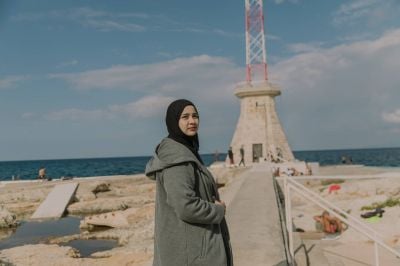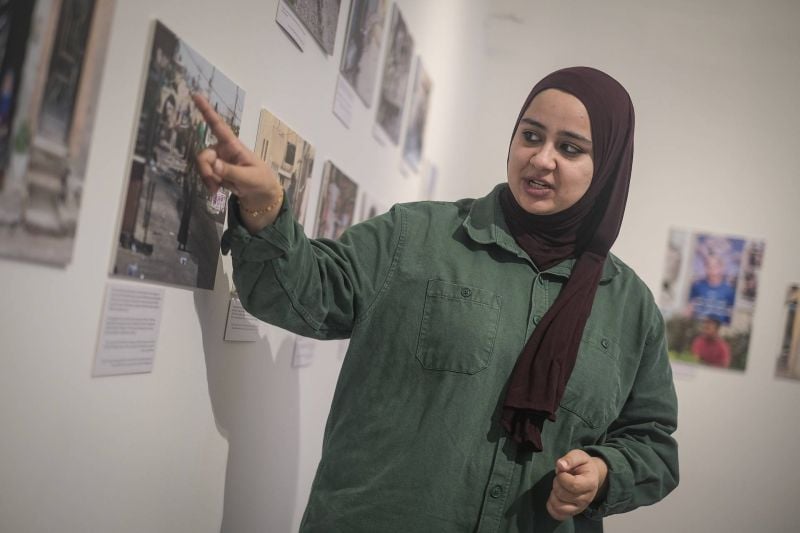
Palestinian journalist Shatha Hanaysha shows her photos of Jenin during an exhibition in Beirut, April 30, 2024. (Credit: João Sousa/L'Orient Today)
BEIRUT — A young couple examines a wall-mounted photograph of two young smiling boys. The woman tears up and then they move to the next photo, an elderly lady with tired eyes and deep creases around her face.
In another picture, a roundabout in a destroyed city that could pass for Saida is emblazoned with the phrase: “A waiting stop until our return.”
The photos, on display at Beirut’s Dar El Nimr gallery, are from Jenin in the occupied Palestinian West Bank, part of an exhibition titled “Jenin: Unscorched Earth.”
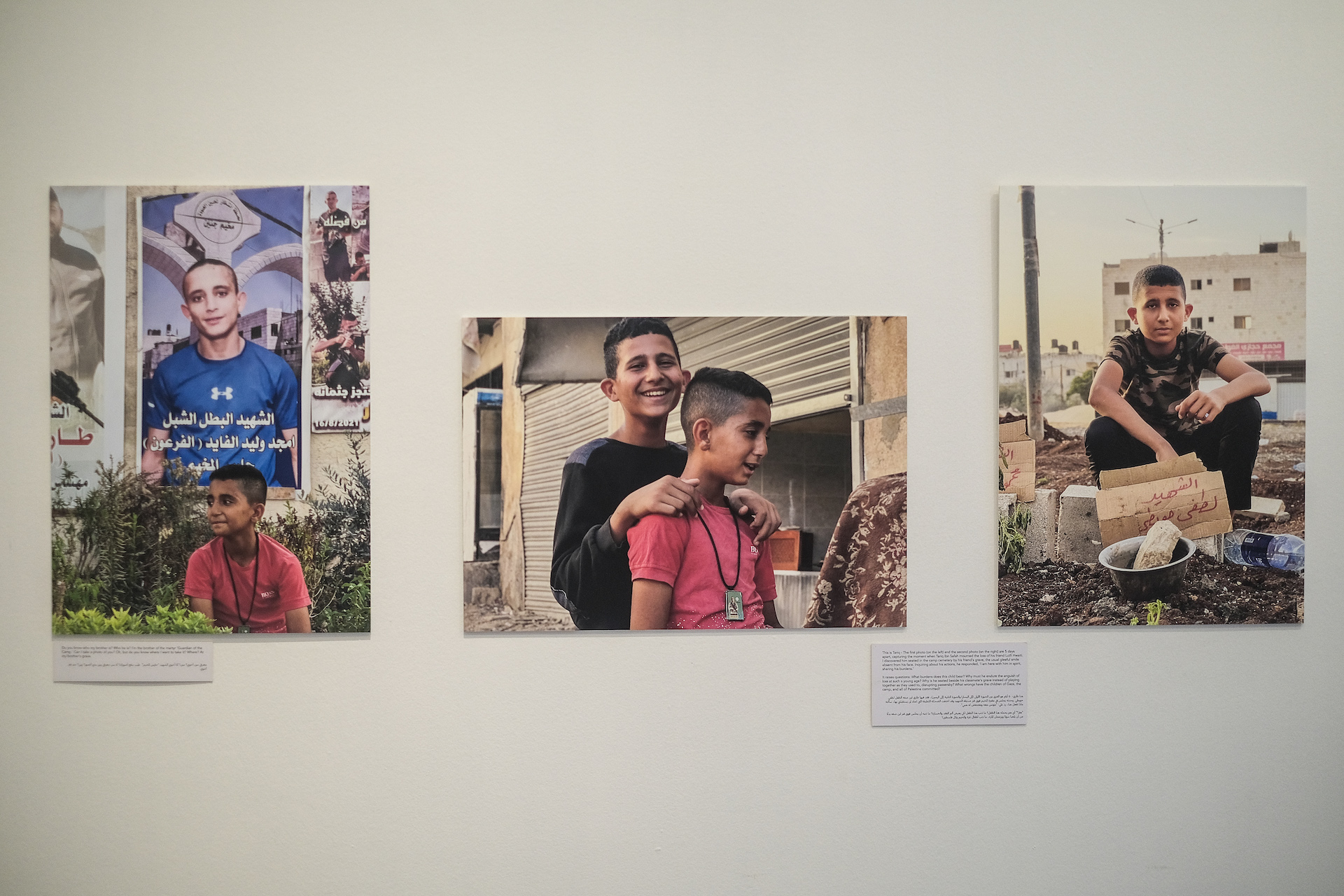 Palestinian journalist Shatha Hanaysha shows her photos of Jenin during an exhibition in Beirut, April 30, 2024. (Credit: João Sousa/L'Orient Today)
Palestinian journalist Shatha Hanaysha shows her photos of Jenin during an exhibition in Beirut, April 30, 2024. (Credit: João Sousa/L'Orient Today)
The exhibition showcases photographs by Jenin-born journalist Shatha Hanaysha, capturing the aftermath of the Israeli incursions between 2022 and 2024 in the city and in Palestinian refugee camps in the northern West Bank, including Jenin Camp, Tulkarem Camp, and Nour Shams Camp.
The Jenin refugee camp was originally established in 1953 to house Palestinians who were ethnically cleansed during the Nakba of 1948, which forced some 750,000 people from their homes to make way for the establishment of Israel.
“I wanted to bring the stories of Jenin with me to Beirut and share them with the people in Lebanon,” Hanaysha tells L’Orient Today from the gallery in Beirut’s Hamra district.
“Some people are under the impression that Israeli attacks have been confined to Gaza, or that they are [only] since Oct. 7, but the truth is that this struggle has been ongoing for 75 years.”
Women as the fabric of Palestinian society
Within the photographs are snippets of everyday Palestinian life in the West Bank, particularly in the northern area, where people live under Israeli occupation.
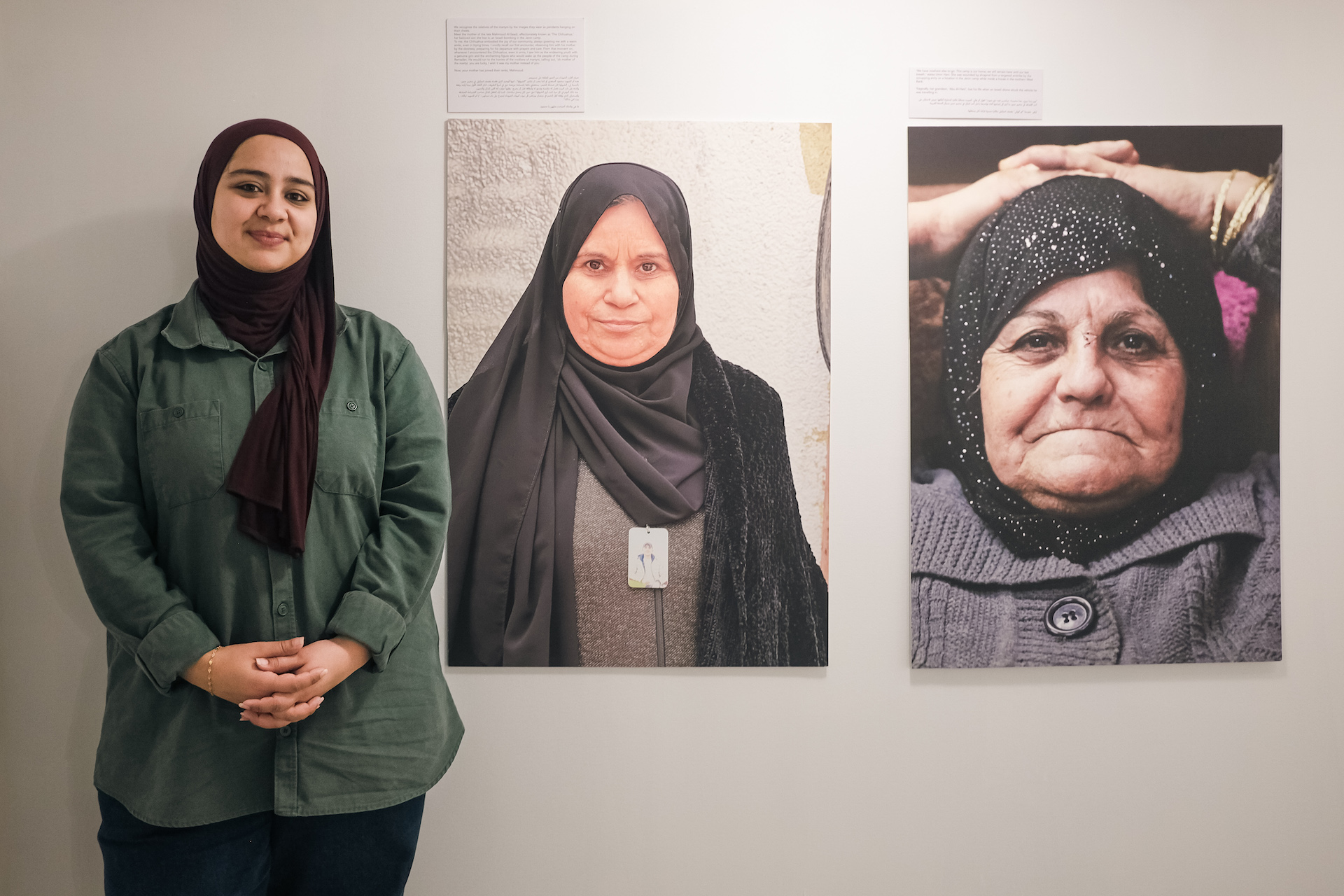 Palestinian journalist Shatha Hanaysha shows her photos of Jenin during an exhibition in Beirut, April 30, 2024. (Credit: João Sousa/L'Orient Today)
Palestinian journalist Shatha Hanaysha shows her photos of Jenin during an exhibition in Beirut, April 30, 2024. (Credit: João Sousa/L'Orient Today)
 Palestinian journalist Shatha Hanaysha shows her photos of Jenin during an exhibition in Beirut, April 30, 2024. (Credit: João Sousa/L'Orient Today)
Palestinian journalist Shatha Hanaysha shows her photos of Jenin during an exhibition in Beirut, April 30, 2024. (Credit: João Sousa/L'Orient Today)
“There are humanitarian stories that were hard for me to showcase in this exhibition, but I felt it was important to tell the stories of the martyrs of the West Bank and their families,” Hanaysha tells L’Orient Today.
“There are hundreds of stories to tell, hundreds of humans behind them, and maybe thousands of photos, but I had to choose carefully the kind of photos I wanted to portray that really tell the Palestinian narrative. I also knew I had to choose photos of Palestinian women, as they have a heavy presence in Palestinian society,” Hanaysha explains.
Among those women: veteran Palestinian journalist Shireen Abu Akleh. Hanaysha was witness to Abu Akleh’s killing by Israeli forces in May 2022, while they were both covering a raid in Jenin. Hanaysha herself narrowly escaped death.
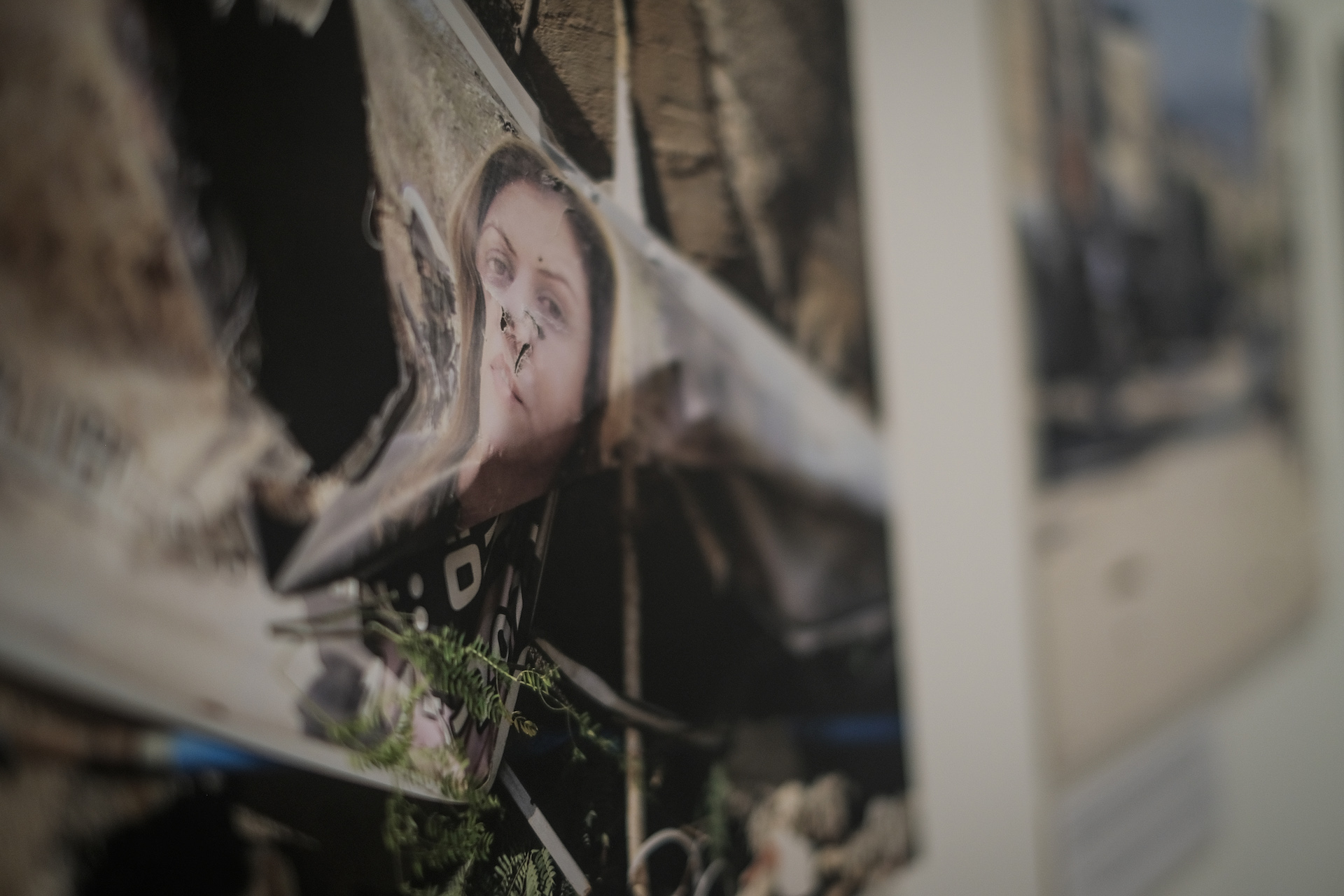 Palestinian journalist Shatha Hanaysha shows her photos of Jenin during an exhibition in Beirut, April 30, 2024. (Credit: João Sousa/L'Orient Today)
Palestinian journalist Shatha Hanaysha shows her photos of Jenin during an exhibition in Beirut, April 30, 2024. (Credit: João Sousa/L'Orient Today)
“Whether she’s a working woman, a mother, a mother of a martyr, or one of the ladies who took it upon themselves to protect the kids of the camp from the occupation’s army during raids, women are always present,” Hanaysha says.
There are also the children, impacted by an entire childhood of growing up under occupation. A photo of two smiling boys, about 13 years old, strikes many of the visitors at the exhibition. Next to it is a portrait of one of the boys, shortly after Israeli forces killed his friend. In it, the boy now looks aged, sitting in front of a grave with a hollow look in his eyes.
‘A smile is a form of resistance’
“Many people don’t believe that the two photos were taken only a few days apart. The first time I met the two boys, they were goofing around, but the second time I met one of them, he was at one of his classmate’s funerals, who had been killed during an Israeli raid on the camp,” Hanaysha says.
“I almost couldn't recognize him. In just a few days, he had turned from a carefree boy into a young man.”
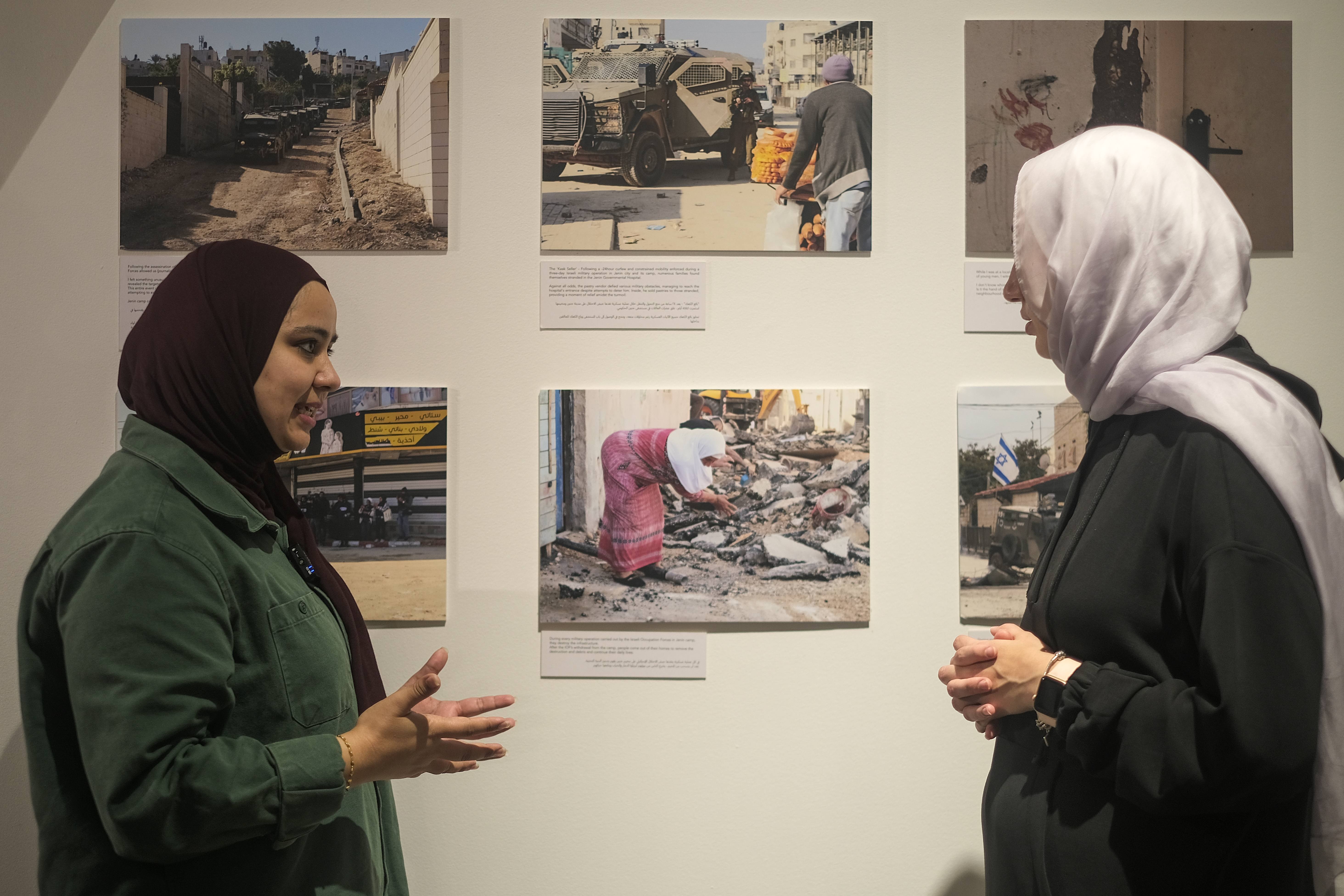 Palestinian journalist Shatha Hanaysha shows her photos of Jenin during an exhibition in Beirut, April 30, 2024. (Credit: João Sousa/L'Orient Today)
Palestinian journalist Shatha Hanaysha shows her photos of Jenin during an exhibition in Beirut, April 30, 2024. (Credit: João Sousa/L'Orient Today)
Still, she says, the difficult portraits are important. “When you see someone up close, facing you in a photo, you start seeing them as humans.”
“I chose photos of people smiling to show hope. I chose photos of people smiling after Israeli raids were over, so it was important to highlight those.”
Since Oct. 7, 434 Palestinians have been killed in the occupied West Bank including East Jerusalem, including 421 by Israeli force and nine by settlers according to OCHA - the UN Office for the Coordination of Humanitarian Affairs.
Around 5,000 Palestinians have been injured, including 725 children, in that same time span.
“It was also important for me to show the regular photos that people are used to — the killing, destruction and violations that the Israeli army commits.”
“I wanted to show that the Palestinian people exist and resist in different ways, whether through arms to defend their country and land, or through their sheer presence in the land and remaining steadfast.”
‘Resisting through their sense of humor after raids’
During Israeli military raids on Jenin, Hanaysha says, “the occupation comes in and damages the streets and infrastructure. But the men and women go to the streets immediately after the raid is finished and start cleaning and tidying up the streets. This is a form of resistance.”
“Every time the youth or the men clear the streets, not pave them again, just clean them from the rubble using their own tractors and equipment, the occupation army comes and destroys them again.”
“I would be in the camp after the raids, taking photos and filming, but also listening to the people’s sense of humor.”
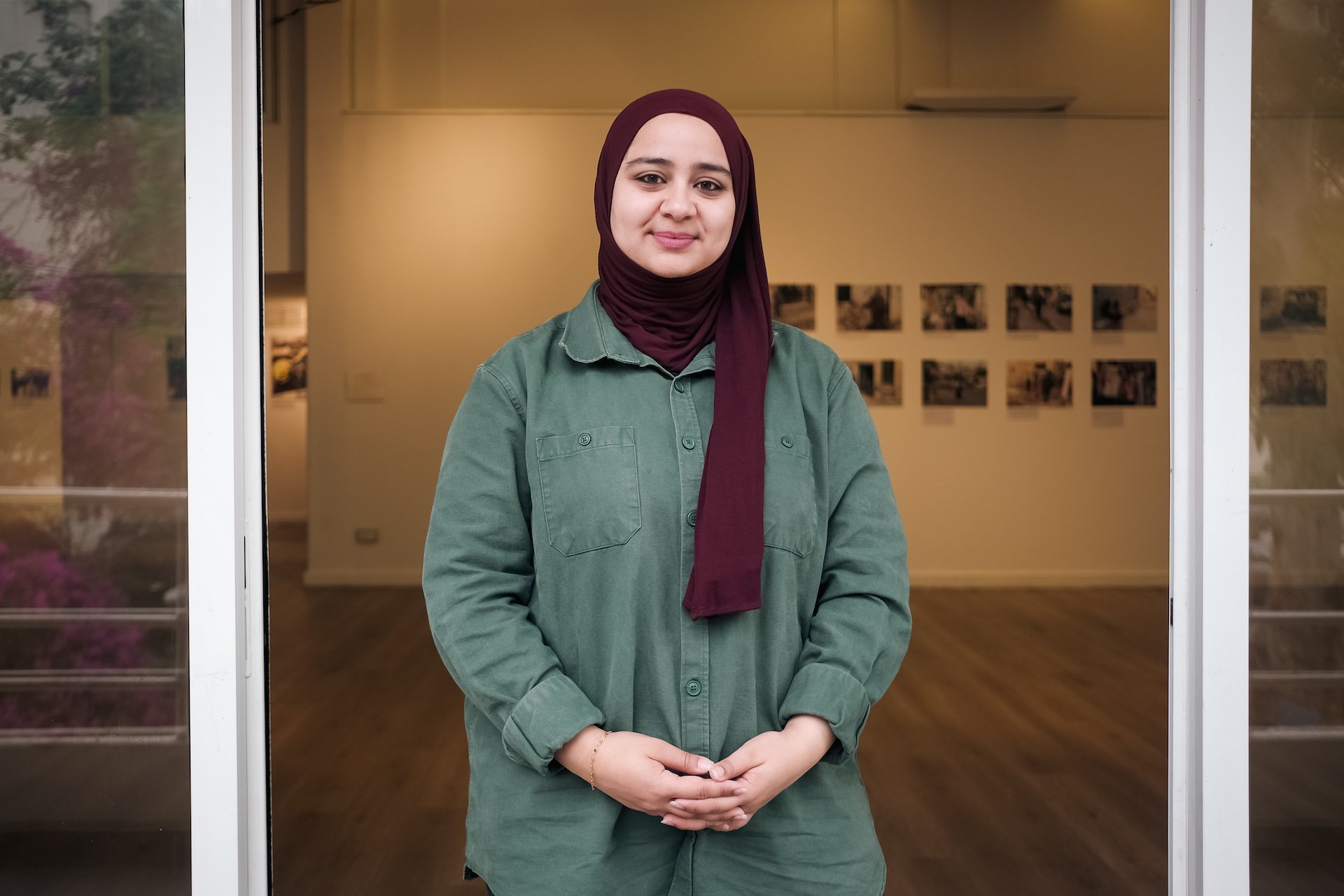 Palestinian journalist Shatha Hanaysha shows her photos of Jenin during an exhibition in Beirut, April 30, 2024. (Credit: João Sousa/L'Orient Today)
Palestinian journalist Shatha Hanaysha shows her photos of Jenin during an exhibition in Beirut, April 30, 2024. (Credit: João Sousa/L'Orient Today)
Shatha walks calmly to another photo at the end of the exhibition.
A destroyed section of a house allows passersby to see inside the remains of a family’s living room.
Shatha remembers it well: the owner of the house was upset, emotional that the Israeli army had destroyed his home.
“One of the passersby looked at the man and told him 'mabrook' [congratulations], you no longer need a fan during the day — you have a big window. So the hard situation became a funny situation.”
She says this lightness is, itself, a form of resistance: remaining steadfast at home, going on with life, and smiling despite hardship.
It is those moments that Hanaysha says she likes to document. “The people of Jenin want me to cover their stories after raids. They know they will see me after raids, and they want to tell me their stories — they want the world to know what is happening in Jenin.”
“Every time the Israeli army raids Jenin, it attempts to scorch it and turn it upside down, but the people insist that Jenin will remain unscorched and so they resist in their own ways,” Hanaysha explains.
“The occupation has been trying to promote the narrative that everything started after Oct. 7, but this is a continuation of the past. In the exhibition, you will see photos from before and after Oct. 7, and you won’t be able to tell the difference because the suffering is one and the same,” she says.
The Israeli army announced in June last year that it intended to eliminate resistance groups, “cleanse the camp,” restore its control over it, and impose a greater Palestinian Authority there.
However, none of these goals were achieved, according to Israel’s own assessment.
Israeli evaluations noted that achieving such goals would mean invading the camp at its depth, which would come at a heavy cost of human casualties for the Israelis — something the army has sought to avoid by targeting resistance fighters from a distance, using drones, and not engaging with them face-to-face.
“The more that Israel tries to burn and scorch the camp, the more people insist on remaining there and resisting in every mean possible, sometimes if only with a smile,” Shatha says.
